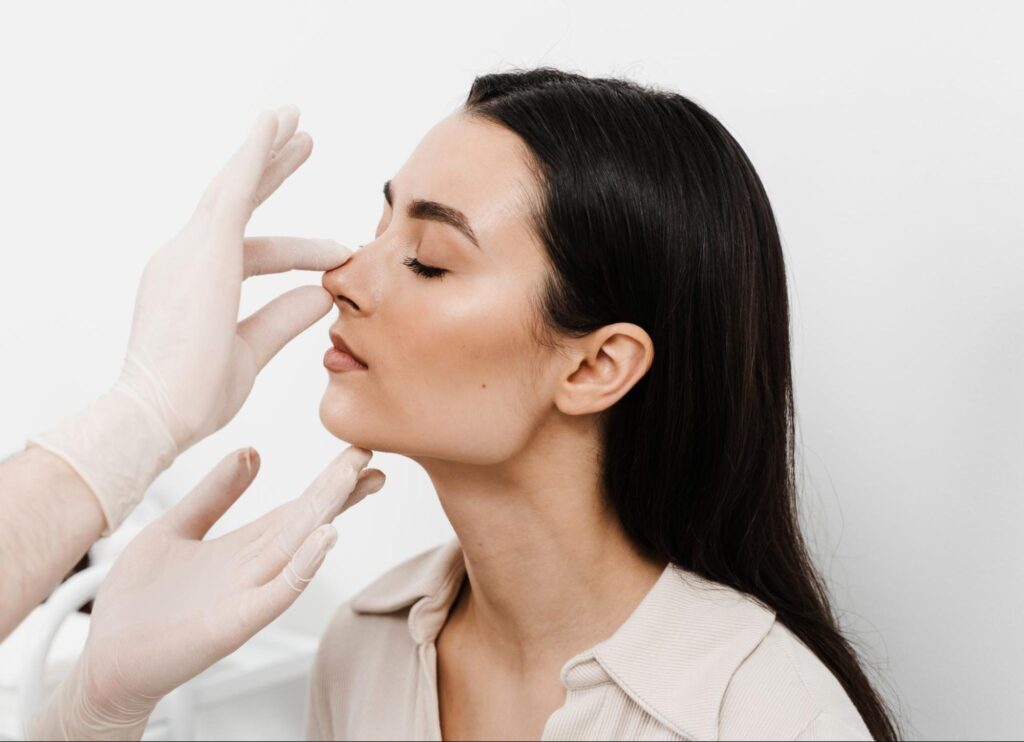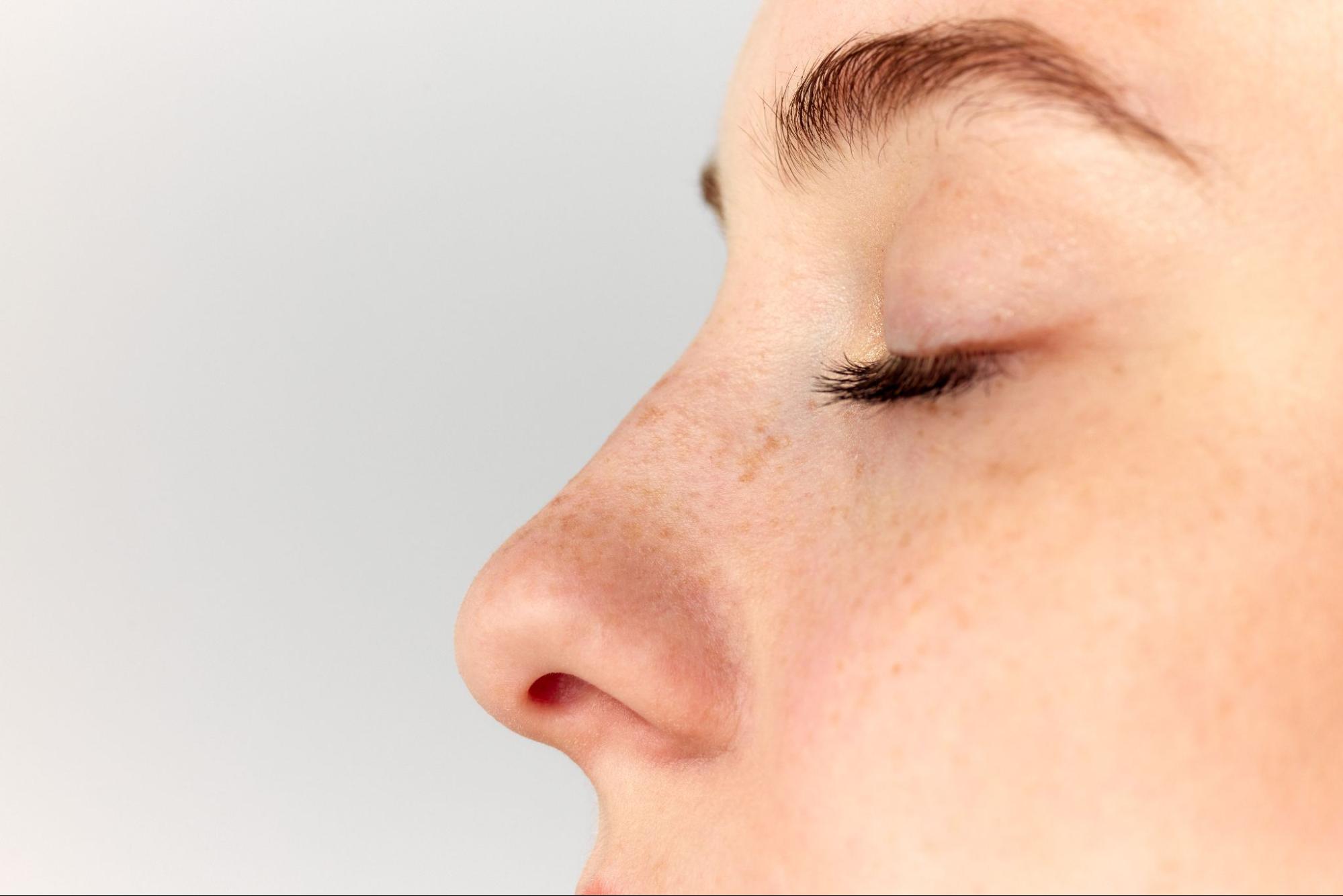In New York City and Englewood,Dr. Monica Tadrosoffers a combined approach to rhinoplasty(nose reshaping) and sinus surgery. She blends her expertise in ear, nose, and throat care and facial plastic surgery to address blockages while improving the look of your nose. Below, you’ll find how and why these two surgeries from the Center for Sinus, Sleep & Facial Plastic Surgerycan work together to help you breathe more freely and feel more confident in your appearance.
What Is Rhinoplasty?
Rhinoplasty is a procedure that reshapes or restructures your nose. It can correct a bump on the bridge, adjust the tip, or refine your nostrils. Many people think of rhinoplasty as purely cosmetic. But, as Dr. Tadros will tell you, it can also help with breathing. When structural problems—like a twisted septum—block airflow, rhinoplasty techniques can straighten and reshape those areas.
Frequent reasons for rhinoplasty include:
- Nose size or shape that feels out of balance with your face
- A crooked bridge or tip caused by genetics or injury
- Issues inside the nose that restrict airflow
Whether you choose rhinoplasty for cosmetic reasons, functional needs, or both, knowing it can be paired with sinus surgery when required is helpful. You get one surgery date, one recovery period, and potentially better results overall.
What Is Sinus Surgery?
Our New York and Englewood team uses sinus surgeryto open and clear the passageways around your nose, cheeks, and forehead. These hollow areas—called sinuses—can become inflamed or clogged for many reasons. Allergies, infections, or nasal structures that block drainage can lead to chronic congestion and pressure.
Common reasons for sinus surgery include:
- Recurrent or long-lasting sinus infections
- Chronic congestion and pressure in the face
- Poor drainage due to small or blocked sinus openings
- Structural challenges like a deviated septum or enlarged turbinates
Dr. Tadros works on your sinus openings during surgery to reduce blockages, remove any growths (such as polyps), and allow better airflow. Sinus surgery often involves slim endoscopic tools that cause less disruption to the surrounding areas.
Why Combine Rhinoplasty and Sinus Surgery?
Combining rhinoplasty and sinus surgery may be best for you if you have both sinus problems and cosmetic or structural concerns with your nose. While sinus surgery focuses on the internal channels that help you breathe, rhinoplastycan reshape your nose’s outer and inner structure at the same time.
Some reasons people choose a combined approach include:
- One Recovery Period:You only need to schedule one surgery date and go through one healing phase.
- Better Breathing:Addressing the nose’s structure—like a deviated septum or bent nasal bones—while also clearing blocked sinus passages can greatly improve your airflow.
- Balanced Appearance:Rhinoplasty can refine the shape or size of your nose so it looks more suited to your face. By doing both simultaneously, you avoid having two separate operations.
- Cost-Effectiveness:Combining procedures may help lower some hospital or anesthesia costs compared to booking them separately.
Because Dr. Tadrosis trained in both fields, she can help you figure out if combining these procedures is right for your circumstances. Not everyone needs both, but if you do, there can be many benefits.
Signs You Might Need Both Rhinoplasty and Sinus Surgery
If you’re local to New York Cityor Englewoodand think you might need both rhinoplasty and sinus surgery, here are some signs to look for.
1. Chronic Congestion and Trouble Breathing
You could benefit from sinus surgery if you constantly feel stuffed up or can’t breathe well through your nose. But if your nasal shape or septum alignment also causes issues, rhinoplasty might help open those passages further.
2. Frequent Sinus Infections
Chronic sinus infections may point to structural blockages. Combining the procedures could be a logical step if you also dislike the appearance of your nose—or have been told you have a nasal obstruction.
3. Deviated Septum
The septumis the thin wall separating your left and right nostrils. When it’s off-center or crooked, it may seem hard to breathe. Rhinoplasty can correct that alignment and help open your airways. If your sinuses have also suffered from repeated infections or blockages, sinus surgery from the Center for Sinus, Sleep & Facial Plastic Surgerycan clear them simultaneously.
4. Unresolved Breathing Problems After Past Surgeries or Injuries
Sometimes, a previous procedure or facial injury may not have fully solved your breathing concerns. Or you might still see cosmetic imperfections that bother you. If that’s the case, a combined operation with Dr. Tadroscan fix leftover issues while ensuring your sinuses are open and your nose looks more balanced.

What to Expect at a Consultation with Dr. Monica Tadros
Before scheduling surgery, you’ll meet with Dr. Tadros in New York City or Englewood. This is your chance to talk about your concerns—whether it’s breathing issues, appearance, or both. The doctor will:
- Review Your Medical History: Chronic sinus infections, past surgeries, allergies, or injuries are important details.
- Examine Your Nose: This often includes an endoscopic evaluation of your sinuses and a look at your septum and nasal passages.
- Discuss Your Goals: Be clear about what you hope to change—both cosmetically and functionally.
- Explain the Possible Approaches: Dr. Tadros will show you how sinus surgery can help your breathing and how rhinoplasty can reshape your nose. If combined surgery is an option, she’ll outline the benefits and any risks.
Common Questions About Rhinoplasty and Sinus Surgery
Here’s what people want to know most about getting both rhinoplastyand sinus surgery at the Center for Sinus, Sleep & Facial Plastic Surgery.
1. Is Combined Surgery Safe?
Yes, provided you choose a skilled and experienced surgeon like Dr. Tadros. Combining procedures can even reduce your overall exposure to anesthesia, as everything is done in one session rather than two separate surgeries.
2. Will My Insurance Cover It?
Health insurance may cover the sinus surgery portion if you can show it’s medically necessary to fix chronic sinus issues. Coverage for rhinoplasty varies. A purely cosmetic rhinoplasty might not be covered, but if a deviated septum is causing breathing problems, that part of the procedure may be eligible. You’ll want to check with your insurance provider for details.
3. How Do I Prepare for Surgery?
Dr. Tadros will give you a list of instructions, such as avoiding certain medications or supplements that thin the blood. You’ll likely need lab tests, and if you’re a smoker, you’ll be asked to stop, as smoking can slow healing. On the day of surgery, arrange for someone to drive you home.
4. What If I Only Want a Cosmetic Change?
If your sinus health is good, there’s no reason to add sinus surgery. You can schedule a standard rhinoplasty alone. Our New York and Englewood team will help you decide if that’s your best option.
5. Can I See a Preview of My Results?
We use digital imaging to show you what your nose could look like after rhinoplasty. This technology can help you set realistic expectations, especially when looking to fix internal sinus problems.

Final Thoughts
Dr. Monica Tadroshas a long track record of helping people in New York City and Englewood breathe better and get more balanced noses. Her dual training in ear, nose, and throat care and facial plastic surgery means she approaches every case with a complete viewpoint. If you’re ready to combine rhinoplasty and sinus surgery to clear out blockages and refine your nose, contact our teamat the Center for Sinus, Sleep & Facial Plastic Surgery.

